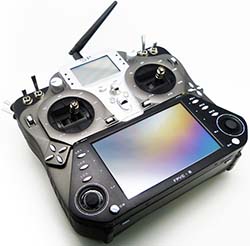 Invented 30 years ago, polymerase chain reaction , or PCR, is one of the greatest inventions of the 20th century. It’s the technique that allows researchers to map genomes, find genetic causes of diseases, create Jurassic Park, and match crime scene DNA to suspects. When PCR was first invented it was extraordinarily expensive, and even today commercial PCR machines cost about the same as a new car. There is an open source project for a PCR machine that costs about $600, but for his Hackaday Prize entry, [David] is knocking a few more zeros off that cost and building a machine for less than the cost of a fast food meal.
Invented 30 years ago, polymerase chain reaction , or PCR, is one of the greatest inventions of the 20th century. It’s the technique that allows researchers to map genomes, find genetic causes of diseases, create Jurassic Park, and match crime scene DNA to suspects. When PCR was first invented it was extraordinarily expensive, and even today commercial PCR machines cost about the same as a new car. There is an open source project for a PCR machine that costs about $600, but for his Hackaday Prize entry, [David] is knocking a few more zeros off that cost and building a machine for less than the cost of a fast food meal.
Despite being the work behind a Nobel Prize, PCR is conceptually fairly simple: A strand of DNA is unwound into two strands, an enzyme, or primer, is annealed onto these single strands, and then biochemistry happens, turning those single helix strands of DNA into a complete double helix, ready for the next replication cycle. The key of the PCR technique is getting the enzymes and primers to react. This is only done at a fairly fine range of temperatures, cycling between 90°C, then 60°, then 72°C.
The oldest models of PCR machines used multiple water baths, with newer commercial machines using something that probably justifies their cost. The OpenPCR project uses an aluminum heater block, but [David] is going for a modern twist on the old-school method. He’s trying to figure out how to exploit convection to get local temperature variations in a single vessel. How he’s going to do this is anyone’s guess, but building a PCR machine for $5 is pretty cool.
 The project featured in this post is an entry in The Hackaday Prize. Build something awesome and win a trip to space or hundreds of other prizes.
The project featured in this post is an entry in The Hackaday Prize. Build something awesome and win a trip to space or hundreds of other prizes.




 With few exceptions, most of The Hackaday Prize are things we really haven’t seen much of before: base-3 computers that have been relegated to the history books, extremely odd 3D printers, and fancy, new IoT devices are the norm.
With few exceptions, most of The Hackaday Prize are things we really haven’t seen much of before: base-3 computers that have been relegated to the history books, extremely odd 3D printers, and fancy, new IoT devices are the norm. 

 Invented 30 years ago, polymerase chain reaction , or PCR, is one of the greatest inventions of the 20th century. It’s the technique that allows researchers to map genomes, find genetic causes of diseases, create Jurassic Park, and match crime scene DNA to suspects. When PCR was first invented it was extraordinarily expensive, and even today commercial PCR machines cost about the same as a new car. There is an
Invented 30 years ago, polymerase chain reaction , or PCR, is one of the greatest inventions of the 20th century. It’s the technique that allows researchers to map genomes, find genetic causes of diseases, create Jurassic Park, and match crime scene DNA to suspects. When PCR was first invented it was extraordinarily expensive, and even today commercial PCR machines cost about the same as a new car. There is an 








